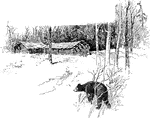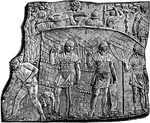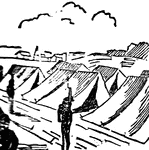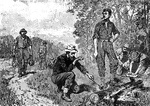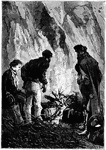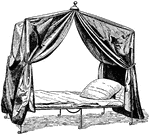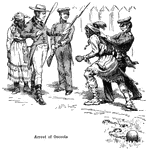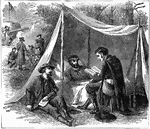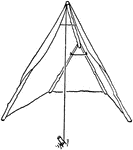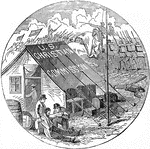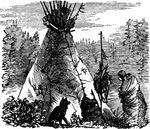Clipart tagged: ‘camp’
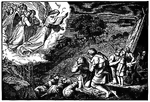
The Annunciation - The Angels Tell Shepherds in the Fields about the Birth of Jesus
"And there were in the same country shepherds abiding in the field, keeping watch over their flock by…

Union Prisoners Confined at the Confederate Prison at Andersonville
Union soldiers being held at Andersonville, a Confederate prison.

Bivouac of the Eleventh Indiana Volunteers
Our special artist, who accompanied General McClellan's command, sketched the gallant Eleventh Indiana…

Camp chimney
"Four such trenches radiating from a common central chimney will give one flue for use whatever may…

Camp Dennison
"Camp Dennison, sixteen miles above Cincinnati, on the banks of the Miami River, General Cox commanding-…
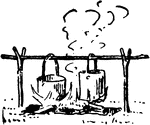
Camp kettle
"Camp kettles can be hung on a support consisting of a green pole lying in the crotches of two upright…

Camp Kitchen
"A still greater economy of fuel can be effected by digging a similar trench in the direction of the…
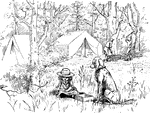
Camping
A little girl collecting berries while her dog watches, and her parents chop wood in the background.
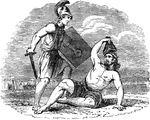
Codrus slain
"Determined to save his own country at the expense of his own life, Codrus disguised himself in a peasant's…

First Minnesota Regiment
"Fort built around the officer's quarters of the First Minnesota Regiment, Colonel Sully, near Fair…

Freemont's troops
"Gathering of Fremont's troops on the prairie, near Tipton, Mo., on the eve of its departure in pursuit…

Fort Hatteras
View of the camp of the twentieth Indiana Regiment; also of Fort Hatteras and the anchorage at Hatteras…
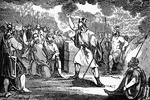
Judas Speaks to His Army
"And Judas said: Gird yourselves, and be valiant men, and be ready against the morning, that you may…
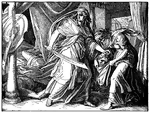
Judith Places the Head of Holofernes in a Bag
Judith, having just beheaded Holofernes, places his head in a bag with the help of her servant. She…

Manassasas Junction
"Manassasas Junction, showing the evacuated Confederate fortifications, abondoned camps and wagons,…
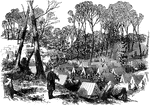
Camp of Ninth Massachusetts
"Camp of the Ninth Massachusetts Regiment in the woods, one mile from the Confederate fortifications,…

Camp Princeton
"New Jersey Camp at Arling, Va., designated as Camp Princeton in honor of one of the Revolutionary battle…

Rolla Camp
"Encampment of the Federal army near Rolla, Mo. The city of Rolla has been famous since the death of…
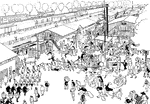
Ruhleben Prison Camp
"A prophetic birds eye view of Ruhleben Prison Camp when the war ends."-1916; Drawing by Hobart Egremont,…
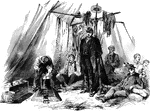
Thirteenth Illinois Volunteers
"Scene in camp life- company mess of the Thirteenth Illinois Volunteers in their camp before Corinth,…

Zouaves
"Encampment of Colonel Ellsworth's New York Fire Zuoaves, on the heights opposite the Navy Yard, Washington,…
